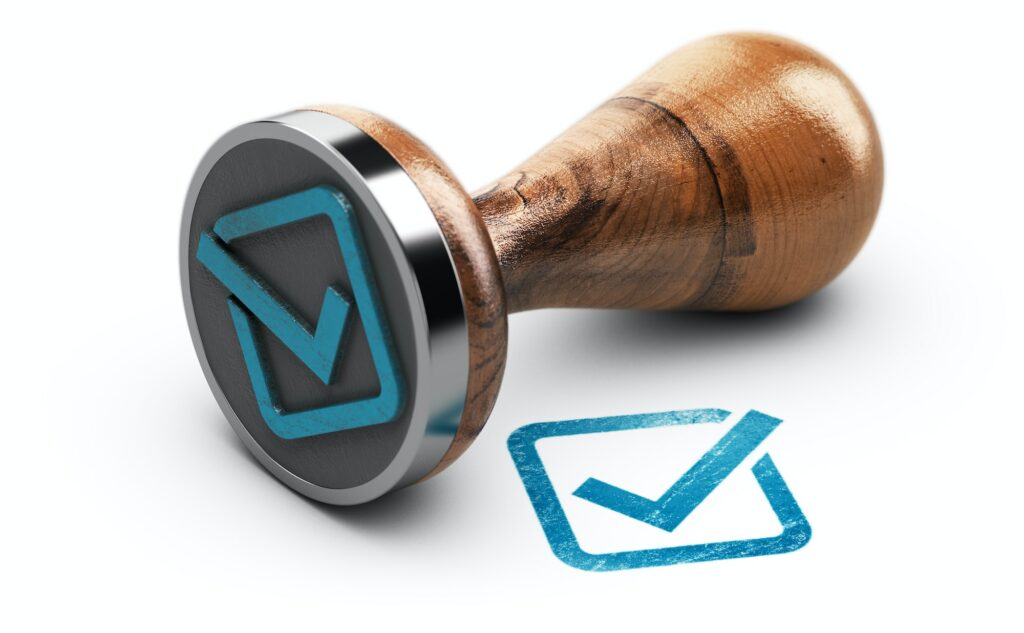Document verification is the process of authenticating the legitimacy and integrity of various types of documents. It involves scrutinizing the provided documents to determine their authenticity, accuracy, and compliance with established standards. Document verification plays a crucial role in several industries and sectors, including government agencies, financial institutions, educational institutions, healthcare organizations, and businesses in general.

Table of Contents
TogglePurpose and importance
The purpose of document verification is to ensure that the information presented in a document is genuine and reliable. It helps to prevent fraud, identity theft, and the use of forged or tampered documents for illegal activities. By verifying documents, organizations can establish trust, maintain security, and make informed decisions based on accurate information.
Document verification is particularly vital in industries that deal with sensitive or confidential data. For example, financial institutions need to verify customer identification documents to comply with anti-money laundering (AML) and know your customer (KYC) regulations. Similarly, educational institutions verify academic certificates and transcripts to confirm the qualifications and credentials of applicants.
Methods and techniques
Document verification employs various methods and techniques to ensure the validity of documents. These methods can range from simple visual inspections to advanced technological solutions. Here are some commonly used techniques for document verification:
1. Visual inspection
Visual inspection involves carefully examining a document to identify potential signs of tampering, forgery, or inconsistencies. This can include checking for alterations, variations in font or color, missing information, or any irregularities in the document’s structure or layout. Trained professionals often perform visual inspections to spot anomalies that may indicate document fraud.
2. Comparison and cross-referencing
In some cases, document verification requires cross-referencing the information provided in a document with external sources or databases. For instance, when verifying a passport, authorities may compare the passport holder’s photograph and personal details with a central database or watchlist to confirm their identity.
3. Machine-readable features
Many official documents, such as passports, ID cards, and driver’s licenses, are equipped with machine-readable features. These features often include barcodes, magnetic strips, or embedded chips that store encrypted information. Specialized devices can read and authenticate these features, helping to verify the document’s legitimacy.
4. Biometric verification
Biometric verification involves comparing an individual’s physical or behavioral traits, such as fingerprints, facial features, or voice patterns, with the information contained in their documents. Biometric data is unique to each individual, making it an effective method for identity verification and fraud prevention.
5. Digital verification
With the increasing digitization of documents, digital verification methods have gained prominence. Digital verification employs cryptographic techniques and digital signatures to verify the integrity and authenticity of electronically transmitted or stored documents. It often involves using encryption, digital certificates, and secure timestamps to ensure the documents have not been tampered with.

Challenges and future trends
While document verification techniques have become more advanced, so have the methods used by fraudsters to forge or tamper with documents. The ever-evolving landscape of document fraud poses challenges for organizations to stay one step ahead. Consequently, continuous research and development of advanced verification technologies are essential to combat emerging threats.
Artificial intelligence (AI) and machine learning (ML) algorithms are increasingly being utilized in document verification processes. These technologies enable automated analysis of documents, making it easier to detect inconsistencies or suspicious patterns. Additionally, blockchain technology has the potential to revolutionize document verification by providing a decentralized and immutable ledger for storing and verifying document information.
In the future, document verification may rely more heavily on digital identity solutions, biometric authentication, and secure decentralized systems. Collaboration between industry stakeholders, regulatory bodies, and technology experts will be crucial to improving the accuracy, efficiency, and security of document verification processes.
Conclusion
Document verification is a vital process that helps organizations ensure the authenticity and reliability of various documents. By employing a combination of visual inspections, cross-referencing, machine-readable features, biometric verification, and digital techniques, organizations can mitigate the risks associated with document fraud and maintain trust in their operations. As technology continues to advance, document verification will continue to evolve, keeping pace with emerging threats and providing enhanced security and reliability in the digital age.
FAQ (Frequently Asked Questions)
Q1: Why is document verification important?
A1: Document verification is important to prevent fraud, identity theft, and the use of forged or tampered documents. It helps establish trust, maintain security, and make informed decisions based on accurate information.
Q2: What industries or sectors commonly use document verification?
A2: Document verification is utilized in various industries and sectors, including government agencies, financial institutions, educational institutions, healthcare organizations, and businesses in general.
Q3: What are some common methods used for document verification?
A3: Common methods used for document verification include visual inspection, comparison and cross-referencing, machine-readable features, biometric verification, and digital verification.
Q4: How does biometric verification work in document verification?
A4: Biometric verification involves comparing an individual’s physical or behavioral traits, such as fingerprints, facial features, or voice patterns, with the information contained in their documents. This helps establish the identity of the document holder.
Q5: How is digital verification different from other methods?
A5: Digital verification relies on cryptographic techniques, digital signatures, and secure timestamps to verify the integrity and authenticity of electronically transmitted or stored documents. It is particularly useful for verifying digital documents and ensuring they have not been tampered with.
Q6: What are some future trends in document verification?
A6: Future trends in document verification include the increased use of artificial intelligence (AI) and machine learning (ML) algorithms, digital identity solutions, biometric authentication, and blockchain technology for decentralized and secure document verification.
Q7: Can document verification be done remotely?
A7: Yes, document verification can be done remotely through digital verification methods. By securely transmitting and verifying digital documents, organizations can perform document verification without the need for physical presence.
Q8: How can document verification help in compliance with regulations?
A8: Document verification plays a crucial role in complying with various regulations, such as anti-money laundering (AML) and know your customer (KYC) requirements. It ensures that organizations have accurate and verified information about their clients or customers.
Q9: What are the challenges in document verification?
A9: Document verification faces challenges due to the continuous evolution of document fraud techniques. Fraudsters constantly develop new methods to forge or tamper with documents, necessitating ongoing research and development of advanced verification technologies.
Q10: How can organizations improve document verification processes?
A10: Organizations can improve document verification processes by adopting advanced technologies, collaborating with industry stakeholders, and staying updated on emerging trends. Continuous training and education for professionals involved in document verification are also important for enhancing accuracy and efficiency.

